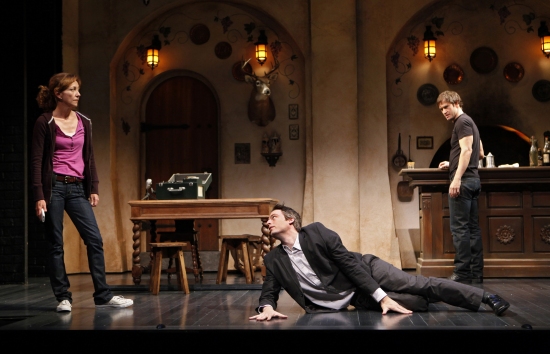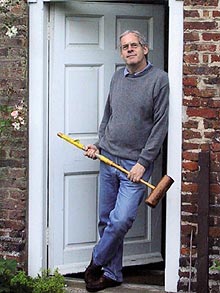 Pops: A Life of Louis Armstrong has been picked for the December Indie Next Great Reads List, a monthly list of twenty new books recommended by the American Booksellers Association to its member stores. Here’s a sneak peek at the Indie Next capsule review of Pops, which was written by James Wilson of Octavia Books in New Orleans:
Pops: A Life of Louis Armstrong has been picked for the December Indie Next Great Reads List, a monthly list of twenty new books recommended by the American Booksellers Association to its member stores. Here’s a sneak peek at the Indie Next capsule review of Pops, which was written by James Wilson of Octavia Books in New Orleans:
Terry Teachout has written an amazing biography of New Orleans’ native son Louis Armstrong. Drawing on newly available primary sources, he weaves together a biography that is both illuminating and inspirational. Armstrong’s contributions to jazz, pop culture, and breaking the color barrier are well told in a crisp, clean prose. Highly recommended!
High and gratifying praise indeed, coming as it does from the birthplace of jazz.
Go here to see the rest of the December list.

 Mrs. T and I recently got around to watching Turner Classic Movies’ Johnny Mercer: The Dream’s on Me, a Clint Eastwood-produced two-hour documentary full of priceless archival footage. It’s being telecast in honor of the upcoming centennial of the birth of the author of the lyrics (and, on occasion, the music) to such classic songs as “Ac-cent-tchu-ate the Positive,” “Autumn Leaves,” “Blues in the Night,” “Come Rain or Come Shine,” “Days of Wine and Roses,” “Early Autumn,” “Emily,” “Jeepers Creepers,” “I Remember You,” “I Thought About You,” “I Wonder What Became of Me,” “I’m an Old Cowhand,” “I’m Old Fashioned,” “Laura,” “Moon River,” “One for My Baby,” “Something’s Gotta Give,” “Skylark,” and “That Old Black Magic.”
Mrs. T and I recently got around to watching Turner Classic Movies’ Johnny Mercer: The Dream’s on Me, a Clint Eastwood-produced two-hour documentary full of priceless archival footage. It’s being telecast in honor of the upcoming centennial of the birth of the author of the lyrics (and, on occasion, the music) to such classic songs as “Ac-cent-tchu-ate the Positive,” “Autumn Leaves,” “Blues in the Night,” “Come Rain or Come Shine,” “Days of Wine and Roses,” “Early Autumn,” “Emily,” “Jeepers Creepers,” “I Remember You,” “I Thought About You,” “I Wonder What Became of Me,” “I’m an Old Cowhand,” “I’m Old Fashioned,” “Laura,” “Moon River,” “One for My Baby,” “Something’s Gotta Give,” “Skylark,” and “That Old Black Magic.”
 I’ve been having trouble figuring out Theresa Rebeck–and I’ve had a lot of opportunities to try. She writes a new script (or two) every year, and most of her plays make it to New York sooner or later, which means that somebody out there must like them. Yet time and again Ms. Rebeck has served up the same disappointing dish, a smart, glib confection that starts off fresh, then goes flat at the halfway mark. So it’s both a delight and a relief to report that “The Understudy” is a raucously funny farce that makes it all the way to the finish line, though the two halves of the play, each of which is effective in its own right, don’t fit together, at least not neatly.
I’ve been having trouble figuring out Theresa Rebeck–and I’ve had a lot of opportunities to try. She writes a new script (or two) every year, and most of her plays make it to New York sooner or later, which means that somebody out there must like them. Yet time and again Ms. Rebeck has served up the same disappointing dish, a smart, glib confection that starts off fresh, then goes flat at the halfway mark. So it’s both a delight and a relief to report that “The Understudy” is a raucously funny farce that makes it all the way to the finish line, though the two halves of the play, each of which is effective in its own right, don’t fit together, at least not neatly. The man who made
The man who made